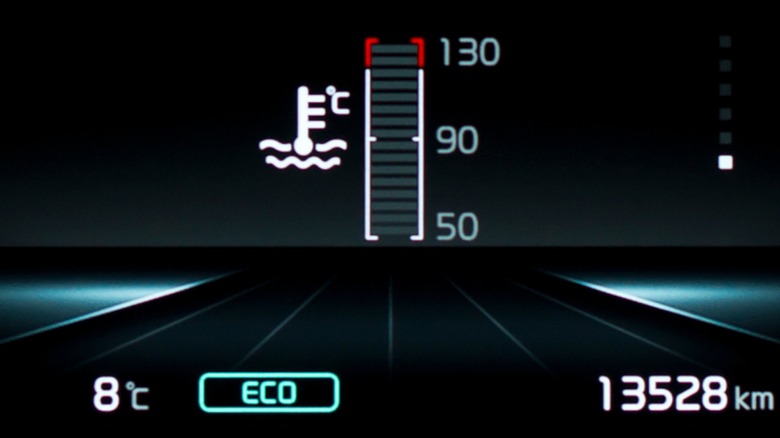We may receive a commission on purchases made from links.

Fast_Cyclone/Shutterstock
Chrysler’s MDS, or Multi Displacement System, was only available for the 5.7-liter HEMI in vehicles produced in 2005 and later. If you’re wondering if your late-model 5.7 HEMI has MDS there are a couple of ways to tell.
Advertisement
First, if it’s equipped with a manual transmission, it doesn’t have MDS. Another potential indicator is the ECO light illuminating on the instrument cluster when cruising on a level or downhill road at highway speeds.
The absence of the ECO light while driving isn’t a foolproof indicator as it won’t light up under certain conditions or if there’s an MDS malfunction. Your car’s first line of communication in the event of an MDS solenoid malfunction is shining or flashing the Check Engine Light (CEL) on the instrument panel.
Another potential sign of a bad MDS solenoid is experiencing lower than average fuel economy. The 5.7 HEMI’s MDS feature is one of Chrysler’s tricks to increase HEMI engine fuel efficiency. Users report fuel economy reductions ranging from 1.5 to 2.5 mpg after disabling the system. A bad MDS solenoid disables the entire system, leaving the engine running on all eight cylinders.
Advertisement
A ticking noise tied to engine speed, often called the «Hemi Tick,» is one of the most common owner-reported problems with the 5.7 HEMI engine. The noise, along with rough engine idling, could indicate serious valve train problems that have progressed beyond a simple MDS solenoid replacement.
How to get the most life from the MDS solenoids in a 5.7 HEMI
The best way to get the most life from a 5.7-liter HEMI’s MDS is keeping the engine oil clean and free of contaminants. As a bonus, the rest of the engine components will benefit from changing the oil as recommended by the owner’s manual.
Advertisement
MDS solenoids employ electrical and mechanical elements to control the flow of pressurized engine oil to the MDS. When conditions — such as vehicle speed, engine load, engine temperature, etc. — are right, each of the four MDS solenoids will allow the pressurized oil to deactivate the lifters for their dedicated cylinder — one, four, six, and seven — allowing the 5.7 HEMI V8 to operate on four cylinders and use less fuel.
If an MDS solenoid goes bad, the system won’t engage and will remain running on all eight cylinders with the CEL illuminated. There are multiple ways to deactivate the system, but preventing the full flow of oil to engine components for long periods presents the risk of failure.
Advertisement
Is changing MDS solenoids a DIY-friendly task?
The hardest part of replacing a bad MDS solenoid are getting to them and removing them from the engine block. The 5.7 HEMI uses four MDS solenoids located underneath the intake manifold.
As a set of four Dorman-brand solenoids cost $279.99 at AutoZone and off-brand sets sell for $75.99 on Amazon, the price of auto repair shop labor could make this repair a worthwhile DIY project. However, don’t forget to pick up an intake manifold gasket set, under $15 on Amazon, before you start.
Advertisement
Also, before you begin, ensure the intake manifold area is free of any debris that could fall into the cylinder head intake ports. You do not want anything falling into your cylinders through a partially open intake valve.
The four MDS solenoids occupy spaces near the corners of the valley between the 5.7 HEMI engine’s cylinder heads. Remove and replace each one before proceeding to the next.
First, remove the electrical connection, then take out the single bolt holding the solenoid in place. Next, use locking pliers to grasp the solenoid’s bolt-hole flange and twist to break the O-ring’s seal. If the MDS solenoid requires additional motivation, a firm tap to its top with a rubber mallet could help.
Advertisement
At this point, it’s a good idea to inspect the engine. Carefully examine the MDS solenoid mounting cavities, the solenoid screens, and intake valves while you’re at it. If everything looks good, it’s time to button it all back up.